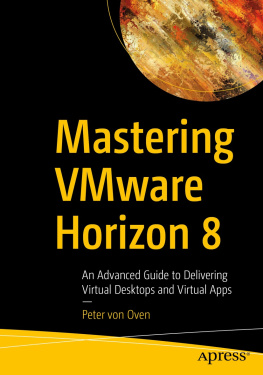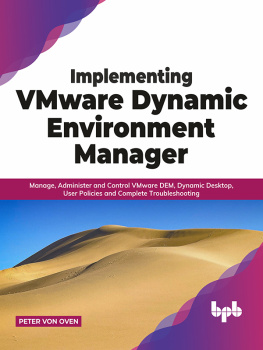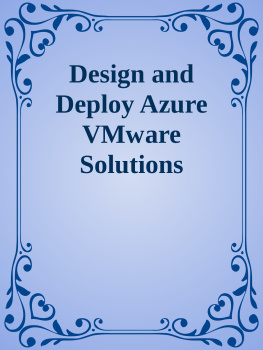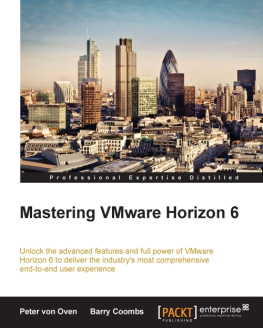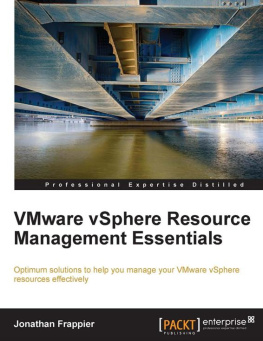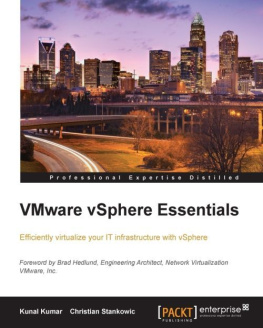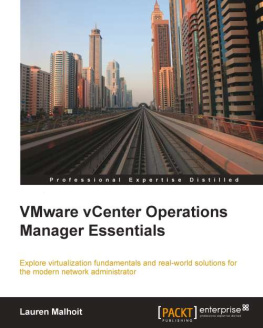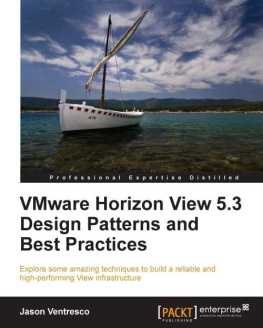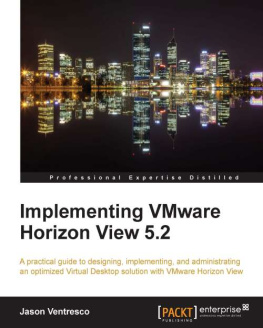Hardik B. Soni
Forewords
Technology is always changingit always has been and always will be. It is what keeps most of us so driven and engaged in this field.
Now, almost unsurprisingly, we find that the norms of the last 30 years are being turned on their head.
There is no doubt that we have entered the Post-PC Era but, in reality, the challenge lies in defining what that actually means for all of us.
The classic client-server paradigm with central control and standardized hardware is changing, and even the definition of what a PC is has become blurred. There is no longer a distinct line between PCs and mobiles; they are all just clients taking many forms now.
This in turn has rightly driven a shift in focus for some from devices and their operating systems to the access and manipulation of data on any device.
Therein lies the challengehow does IT stay in control of what it thinks it should while enabling change and giving its consumers choice and flexibility?
The key is in driving transitional projects and technology with both these aims in mind.
The strategy behind the Horizon Suite from VMware has been to enable choice with a focus on giving access to applications and data anywhere on any device.
However, there are not many greenfield enterprises in this world. Even if you have a clear vision of direction, the legacy of our industry has left a complex landscape to navigate for any organization.
As you will learn in this book, Horizon Mirage is a key piece of that storysomething that can ultimately free you up from being locked to one physical device and allows a user to have his/her choice while enabling a system administrator to stay in control and manage the journey.
Joe Baguley
Chief Technology Officer, EMEA
<>
+44 7971 27 21 26
@joebaguley
Managing and delivering desktop images (the software that we load and run on PCs) to users is a complex and difficult task. Using tools and processes developed over a decade ago, most IT organizations today find themselves equipped to deal with very standardized environments with little variety in hardware, usage styles, or system images. Their management and security processes are based on the assumption of predictable configurations, and each new configuration drives a variant of the processin other words, more work. Their operational reality is at odds with what's actually happening to the tools that are getting ever more diverse and ever less predictable in the hands of their users. Complexity is rising and the challenge for IT is rising with it. What's needed is a next generation of management toolsone that adapts current processes so that they can embrace all the "change" without driving up work. VMware Horizon Mirage is just such a tool.
Horizon Mirage is a unique proposition, combining new capabilities with improved versions of some already available capabilities from existing management tools. It partly overlaps a number of other products but no other product wholly overlaps it. Deployed with an existing PC Lifecycle Management (PCLM) tool, it will improve the effectiveness of existing management processes and extend functionalities with new process support. Added to an existing portfolio of PC management tools, it will not only be a valuable new asset in its own right, it will also increase the value returned by some of the other assets in use. In this way, it is also pretty unique.
At the center of the Horizon Mirage approach is a new approach to building and delivering desktop images to users, whatever the type of device they are using (desktop or laptop, physical or virtual). Horizon Mirage builds images in layers, thus modularizing the build process and simplifying the requirements of delivery to users. The lower layers in each image stack are always managed and delivered from the center, but ownership of the upper layers can be given to users or groups of users. This allows Horizon Mirage to accurately reflect a key attribute of real-world PC deployment: federated governance. The result is a tool that helps optimize the reach of centralized management processes and policies while accurately reflecting the need for departmental autonomy in the way some applications are used.
Many IT organizations today are still in the final throes of a Windows migrationin most cases, from Windows XP to Windows 7. As they complete that upgrade against a backdrop of growing demand for improvement, an increasing choice of devices, and of course, consumerization, it is very clear that the way they manage PCs today has to improve. It is also clear that the requirement to manage and deliver desktop images is not going away any time soon due to the breadth, depth, and criticality of their desktop application portfolios. They can't just stop doing the things they do now. This means they need to find better ways of doing those same things.
The way users work through technology (or enduser computing in VMware terminology) is at a point of inflection. The previous generation of technologies, represented by the PC, is slowly being deprecated from IT asset portfolios and replaced with the next-generation mobile devices, social platforms, applications with narrower focus, and cloud-based services. But there can be no rip-and-replace in this shiftthe different generations will need to coexist for some time to undergo a gradual shift from one to the other at a rate reflecting our ability to change and invest in new applications. Helping organizations manage their transformational journey in enduser computing is central to the VMware approach, and we believe Horizon Mirage will play a key role.


